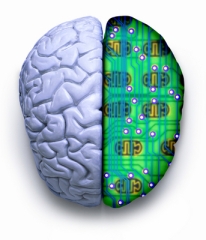Blog Archive
-
2013
(37)
- May(3)
-
March(12)
- Source: fashionfeen.wordpress.com via Holly on Pin...
- http://feeds.feedburner.com/TEDTalks_video
- Teens Irked by Sexting, Do It Anyway Sext...
- When tackling the brain, don’t forget the mind ...
- Woman who smoked through hole in throat dies P...
- Holly Madison plans to eat placenta after giving...
- Venezuela expels US diplomat for 'espionage' ...
- Venezuela's Hugo Chavez dies of cancer Contr...
- Boosting Testosterone Leads to Dramatic Increas...
- Laser pointers are
- Primus Hospital plans kidney transplant centre...
- In the not-too-distant future, you'll receive a fu...
- February(21)
- January(1)
Wednesday, March 6, 2013
When tackling the brain, don’t forget the mind
47
The human brain is an incredibly complex object. With billions of cells each with thousands of connections, it is difficult to know where to begin . Neuroscientists can probe the brain with electrodes, see inside it with scanners, and observe what happens to people when bits of it are damaged in accidents and disease. But putting all this information together is rather like reconstructing a puzzle without the picture on the box for guidance.
We could take inspiration from theHuman Genome Project. The genome is also extremely complex, with billions of building blocks. Despite these challenges, the genome was successfully unraveled at a cost of around $3.8 billion in 2003. The knowledge generated by the Human Genome Project isestimated to have produced $141 in the economy for every $1 spent on research.
Now the Obama administration plans to do the same for the human brain, on a similarly ambitious scale ($3 billion over ten years). The goal of the “Brain Activity Map” (BAM) is to map the activity every neuron and connection in the living brain. Because activity of the brain determines our mental lives, the hope is that a comprehensive roadmap will help us understand how memories are formed, how particular drugs might alleviate psychiatric disorders , and even how the brain generates consciousness. The relevant technologies (multi-electrode recording, optogenetics) are advancing rapidly, and large-scale studies are already providing new insights into how networks of cells interact with each other. A successful Brain Activity Map is well within our grasp.
But what will success look like? Will a map of the human brain be useful in the same way that a map of the human genome is useful? In genetics, success allows us to understand and control physical characteristics. In neuroscience, success should lead to an equivalent understanding of the mind. We would be able to use the map to help reduce aberrant emotions in post-traumatic stress disorder, to lift mood in depression, and to reverse the decline of Alzheimers. Yet all these applications rely on a thorough understanding of the mind as well as the brain.
The computer scientist David Marr noted that the mind can only be fully understood by linking three levels: the function of the system, the computations the system carries out, and how these computations are implemented in the brain. Recording brain cells firing away on their own, even thousands of them, will only get us so far. Imagine being able to visualize the electronics of your computer while tapping away at an email. The patterns you see might tell you broadly how things are working, but you could not divine that you had a web browser open, and certainly not that you were writing to an old friend. Instead, to gain a full understanding of the computer, you would need to understand the software itself, as well as how it is implemented in hardware. In an article in the journal Neuron, the scientists behind the BAM proposal remind us that brain function emerges “from complex interactions among constituents”. They seem to agree with Marr. But while we don’t know the full details of the proposal, in its current form the majority of BAM funding will be thrown at understanding only one of his three levels: implementation.
Studying one level without the other is rather like building the Large Hadron Collider without also investing in theoretical physics. Psychologists and cognitive scientists are experts at bridging the gap between the workings of the mind and brain. For example, by carefully designing behavioral tests that can probe mental dysfunction, they are beginning to delve beneath the traditional classifications of mental disorders to understand how particular components of the mind go awry. These individuals need to walk hand in hand with the technologists on the frontline of brain science. The new technologies championed by the BAM scientists will produce a rich harvest of data about the brain, and they are a crucial part of a long-term investment in the brain sciences. But without similar investment in the mind sciences we will be left puzzling over how the pieces fit into our everyday lives. Only by considering the mind when tackling the brain will we get more BAM for our buck
Subscribe to:
Post Comments (Atom)
